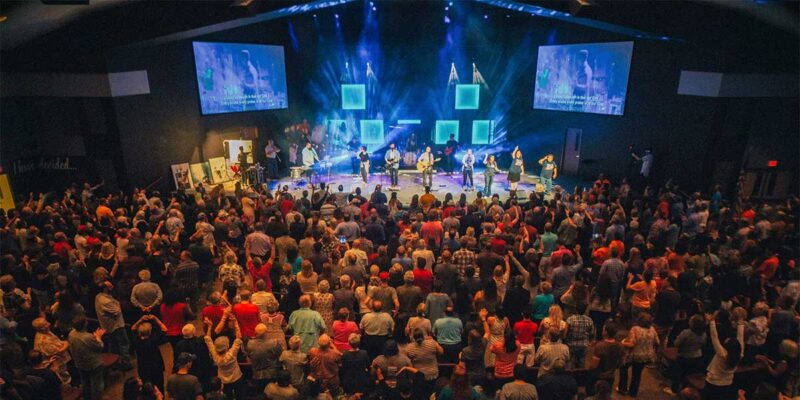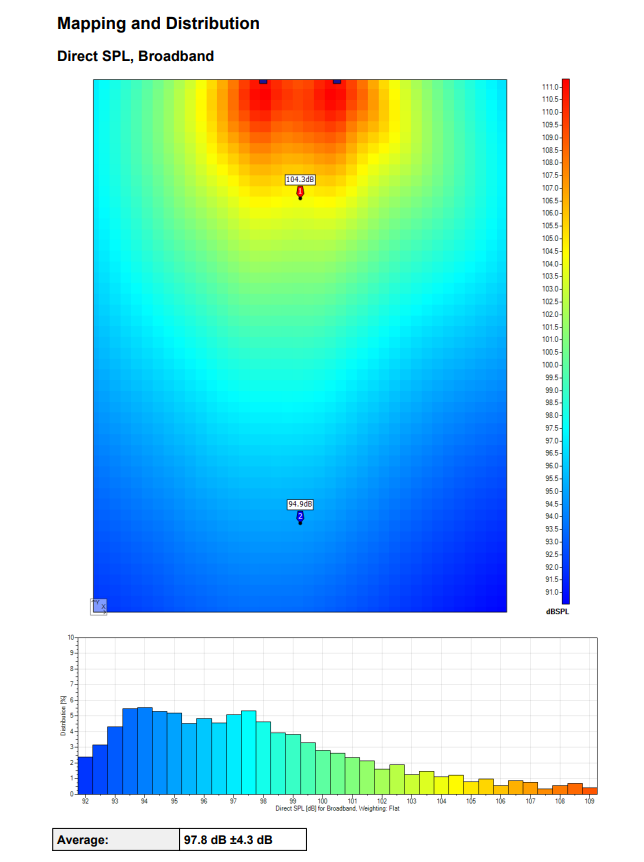The True Cost of A/V/L for Churches
 Is it better to spend more on a higher priced technology than to go for the cheaper alternative? This is a question of the ages that has been exploited on both sides of the same coin by the marketing teams at manufacturers, seemingly forever. We’ve all had situations where the axiom “you get what you pay for” has rung true, but when it comes to entire A/V/L systems integration, the actual value of equipment is a bit more complex, though not often mentioned during the recommendation or buying phase. This could be a mistake on the part of both manufacturers and dealers.
Is it better to spend more on a higher priced technology than to go for the cheaper alternative? This is a question of the ages that has been exploited on both sides of the same coin by the marketing teams at manufacturers, seemingly forever. We’ve all had situations where the axiom “you get what you pay for” has rung true, but when it comes to entire A/V/L systems integration, the actual value of equipment is a bit more complex, though not often mentioned during the recommendation or buying phase. This could be a mistake on the part of both manufacturers and dealers.
The True Cost of Technology
The further ahead of the technology curve you purchase, the more less likely you are to have tax depreciation values work for you (especially if you update these items frequency), so there’s a trade-off between bleeding-edge and equipment that’s been on the market for a couple of years. From a church’s perspective, being able to take advantage of the depreciation of assets can can change their willingness to rethink their A/V/L budgets.
Depreciation happens over time. The amount of time allowable is based on the type of asset, so you’ll need to check (in the U.S.) the IRS regulations on the length of time that each asset can be depreciated. Because of this, two different assets with the same dollar value could have differing accumulated depreciation due to their depreciation schedule.
In the finance world, depreciation is applied to tangible assets, whereas intangibles are amortized over time. The principle, however, is that the true cost of technology is a combination of factors, including the purchase price, the expected lifespan of the equipment, the ongoing maintenance cost, and the amortization/depreciation schedule.
Explaining the Cost vs. the Value
When a church forays into the world of A/V/L technology, there needs to be an understanding of the never-ending financial black hole that opens up. Far beyond the initial purchase, the costs continue through upgrades, maintenance, training, and replacement – and these costs don’t ever really end. I once watched a television show about super yachts, and wealthy yacht owner made the comment that owning a yacht was not about if you could afford a yacht or not, but if you could afford to keep a yacht. In a similar sense, the A/V/L world is about being able to keep systems up-to-date and performing consistently.
In the constant internet-fueled price wars, the race to the bottom is a losing one for all involved. I’ve written extensively here at rAVe (Self-Calculating R.O.I., The Day the A/V/L Industry Changed, Inversely Proportional R.O.I.) about the importance of defining value over price, so I won’t rehash those thoughts here. I will, however, point out the benefit of understanding the depreciation values of key components when designing a system for a church, as this calculation can often be eye-opening for the pastors who are typically focused on the bottom line dollar amount.
When line item bids or proposals are submitted, the church will almost always look at individual costs and then drift their eyes towards the final, summed number at the bottom of the row.
Your firm may or may not choose to provide line item pricing, but it’s important to describe estimated or actual depreciation values that the church can use in the long-term approach to investing in systems integration.
The value of an A/V/L system is not at the end of a summated equipment list; it is defining the objective of the system, the goals of the church for the system, and the culture of the team operating the system and performing on the system. The net effect is greater than the sum of the parts. If this is not a part of the value proposition sales process, price will invariably become the sticking point. But, with a value proposition and estimated depreciation schedule over a five to 10 year period, the church can better understand the value of their invested dollars.
The Secret of the A/V/L Industry
Some may scoff at the idea of bringing depreciation values into the sales process, saying that it devalues their expensive equipment. I think this is a smoke-screen for the real issue: there’s no lifetime plan for most units anyway.
Planned obsolescence is the secret not admitted, even in the private demo rooms of InfoComm, AES, LDI, or NAB.
I believe part of a notable trend of five-plus year old equipment not having spare parts in inventory by some (many?) manufacturers is due partly to the advancement of technology. The rate of change may be so fast that companies are outdoing themselves every other year, making huge leaps that require a higher turnover in inventory.
And yet, there are far too many instances in the A/V/L space, particularly in the house of worship market, which often sees less annual usage than corporate, education or government due to weekend-focused usage — of units being sent to EOL (End Of Life) status within four or five years, leaving clients with limited options for on-going maintenance. And even when parts are not the issue, I’ve personally been involved in situations where church have spent hundreds of thousands of dollars on a multitude of similar/same products from a manufacturer, only to find that a wholesale swap out of five-year old equipment with the hours of a two-year old product was necessary because the products had been EOL’d.
There was a time when a product might be installed and left alone to work quietly for a decade or more. That’s become the story of near legendary gear that’s still made today with little changes because it was so well made the first time. And it is these very cases that make make the axiom of “you get what you pay for” to ring true.
My question is this: How much of the higher dollar equipment, in lieu of depreciation values and EOL transitions, can this axiom be applied to today?
What say you? Share your thoughts in the comments below!





